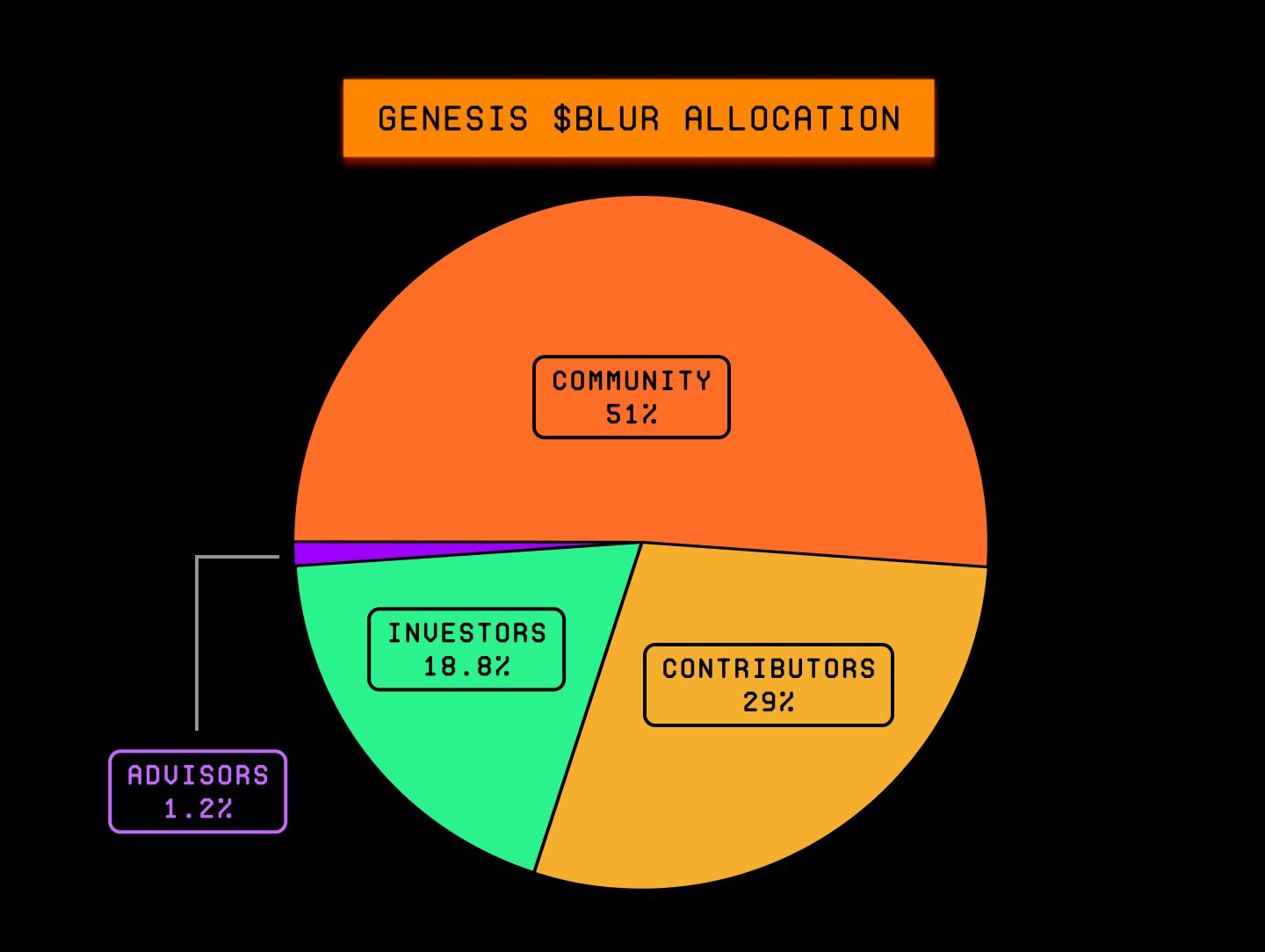What is a Blur DAO and how it works?
This article provides an in-depth understanding of how Blur DAO works, its tokenomics, and contract addresses, along with a security audit report by Dedaub.

TL;DR:
- Blur DAO is a decentralized autonomous organization governing the Blur trading platform for NFTs.
- It aims to empower the community by enabling them to have a say in key decisions related to the protocol's value accrual and distribution.
- BLUR ERC-20 token lies at the heart of the DAO, enabling community members to participate in governance.
- The Blur DAO has significant powers related to the protocol's value accrual and distribution, and it also features various committees that streamline operations.
- BLUR tokenomics are designed to promote community-driven governance and long-term sustainability.
- Security audit report by Dedaub confirms the solidity of the protocol, and minor issues identified are expected to be addressed in the future.
What is a Blur DAO?
Blur, a trading platform for NFTs, has gained significant traction since its launch four months ago, with over 146,823 users trading $1.2 billion worth of NFTs. In an effort to further decentralize the platform and empower its community, Blur has created a DAO with 360M BLUR tokens to be distributed to Traders, Care Package holders, and Creators.
This move puts the control of the protocol's value accrual and distribution in the hands of the community. To support the community-led growth of the platform, the Blur Foundation has been established. Additionally, Care Package holders and creators who have traded collections on Blur can claim their $BLUR airdrop. The BLUR token enables community members to actively participate in governance and shape the future of the Blur ecosystem.
How Blur DAO works?
The Blur DAO is an essential part of the Blur protocol, responsible for its governance and management. At the heart of the DAO lies the BLUR ERC-20 token, which enables community members to have a say in key decisions related to the protocol's value accrual and distribution.
To participate in the governance process users can register their voting balances by delegating their BLUR tokens to an address. The amount of voting power a user has is proportional to the number of tokens they own or have delegated.
Proposals in the Core category require on-chain actions, while Process proposals aim to make changes to the implementation or decision-making process of the DAO. Informational proposals, on the other hand, provide general guidelines or information to the community.
The governance process in Blur consists of three phases
- The first phase involves publishing proposals on the Research forum, where the community can provide feedback and suggest improvements.
- The second phase is a 14-day voting period using gas-less Snapshot voting.
- Proposals that receive sufficient support move on to the third phase, where they are executed on-chain subject to another successful voting period.
The Blur DAO has significant powers related to the protocol's value accrual and distribution. For instance, it can set the protocol fee rate after 180 days, issue treasury grants, and perform other on-chain functions such as setting the governor timelock, quorum minimum, and voting period.
The Blur DAO also features various committees that help streamline operations and transfer their functions to governance over time
- The Safety Committee ensures proposals follow the governance process.
- The Marketplace Committee manages upgrades to the Blur marketplace and executes policy decisions around highly dynamic subjects like royalties.
- The Incentive Committee is responsible for managing incentive programs for Blur users, with the power to utilize up to 10% of the Genesis Supply for this purpose.
$BLUR tokenomics

BLUR tokenomics is designed to empower the community and facilitate democratic governance of the protocol. The initial allocation of BLUR consists of 3 billion tokens, which will be made accessible over a period of 4 to 5 years. Here's a breakdown of the allocation structure:
- 51% to Blur community members (1,530,000,000 BLUR)
- 29% to past and future core contributors with 4-year vesting (867,601,888 BLUR)
- 19% to investors with 4-year vesting (565,633,826 BLUR)
- 1% to advisors with 4 to 5-year vesting (36,764,286 BLUR)
The community treasury plays a vital role in the governance of the protocol. 12% of BLUR, equivalent to 360 million tokens, can immediately be claimed by all NFT traders across any marketplace from Oct 19 2022 to Feb 14 2023, historical users of Blur with Care Packages, and creators. Additionally, the community treasury has 39% of BLUR supply available to distribute to the community through contributor grants, community initiatives, and incentive programs.
Here's a breakdown of the community treasury
- 12% can be claimed by all NFT traders across any marketplace, historical users of Blur with Care Packages, and creators
- 39% of BLUR supply available to be distributed to the community through contributor grants, community initiatives, and incentive programs
- 10% has been allocated to the incentive budget for the next incentive release
- More can be allocated via governance vote if all of the incentive budget is utilized
The vesting schedule for BLUR tokens is another crucial aspect of the tokenomics. The tokens for core contributors and launch partners will vest on an identical schedule, with the addition of a 4-month cliff for transfers. Advisors' BLUR allocation will vest over 48 to 60 months with a 4 to 16-month cliff.
According to the team, the allocation, community treasury, and vesting schedule of BLUR tokens are all designed to promote community-driven governance and long-term sustainability of the Blur protocol.
$Blur Contract Addresses
The security audit report by Dedaub for the Blur Protocol's smart contract
The audit was focused solely on the changes made to the Blur Protocol contracts and not on the whole protocol. Two auditors worked on the codebase for three days on the BlurExchange, governance, and interface contracts.
There were minor upgrades to the BlurExchange contract to alter the fee mechanism and the addition of new governance infrastructure, which included contracts such as BlurToken, BlurGovernor, TimelockController, TokenLockup, and BlurAirdrop.
The auditors identified two low-severity issues with the TokenLockup contract. One issue was that schedules already timed-up may not be taken into account if a preceding one hasn't expired yet, and the other issue was that the schedule portions are not checked whether they add up to 100%.
There were no critical or high-severity issues found during the audit.
The auditors identified centralization issues in the governance contracts. Accounts that have the role of owner for different contracts can take over/override governance actions. The owner of BlurExchange can directly set the governor, and the owner of BlurToken can add any lockups, containing any tokens. All token balances are summed together for voting purposes, with no check that they are over the same token.
The auditors also recommended considering two other advisory issues. The significance of BlurToken::delegates should be clearly documented, and possible out-of-bounds access could occur due to lack of length compatibility.
Finally, the auditors noted that the code was compiled with Solidity 0.8.17, which at the time of writing, didn't have any known bugs.
Summarizing
Blur DAO is a decentralized autonomous organization that is designed to govern the Blur trading platform for NFTs. With the creation of the Blur DAO, the platform aims to empower the community and enable them to have a say in key decisions related to the protocol's value accrual and distribution. The BLUR ERC-20 token lies at the heart of the DAO and enables community members to participate in governance.
The Blur DAO has significant powers related to the protocol's value accrual and distribution, and it also features various committees that streamline operations and transfer their functions to governance over time. With an emphasis on community-driven governance and long-term sustainability, the Blur DAO represents a new era in NFT trading platforms. The security audit report by Dedaub confirms the solidity of the protocol, and the minor issues identified are expected to be addressed in the future.
Check BTC Peers guide of the most promising crypto





